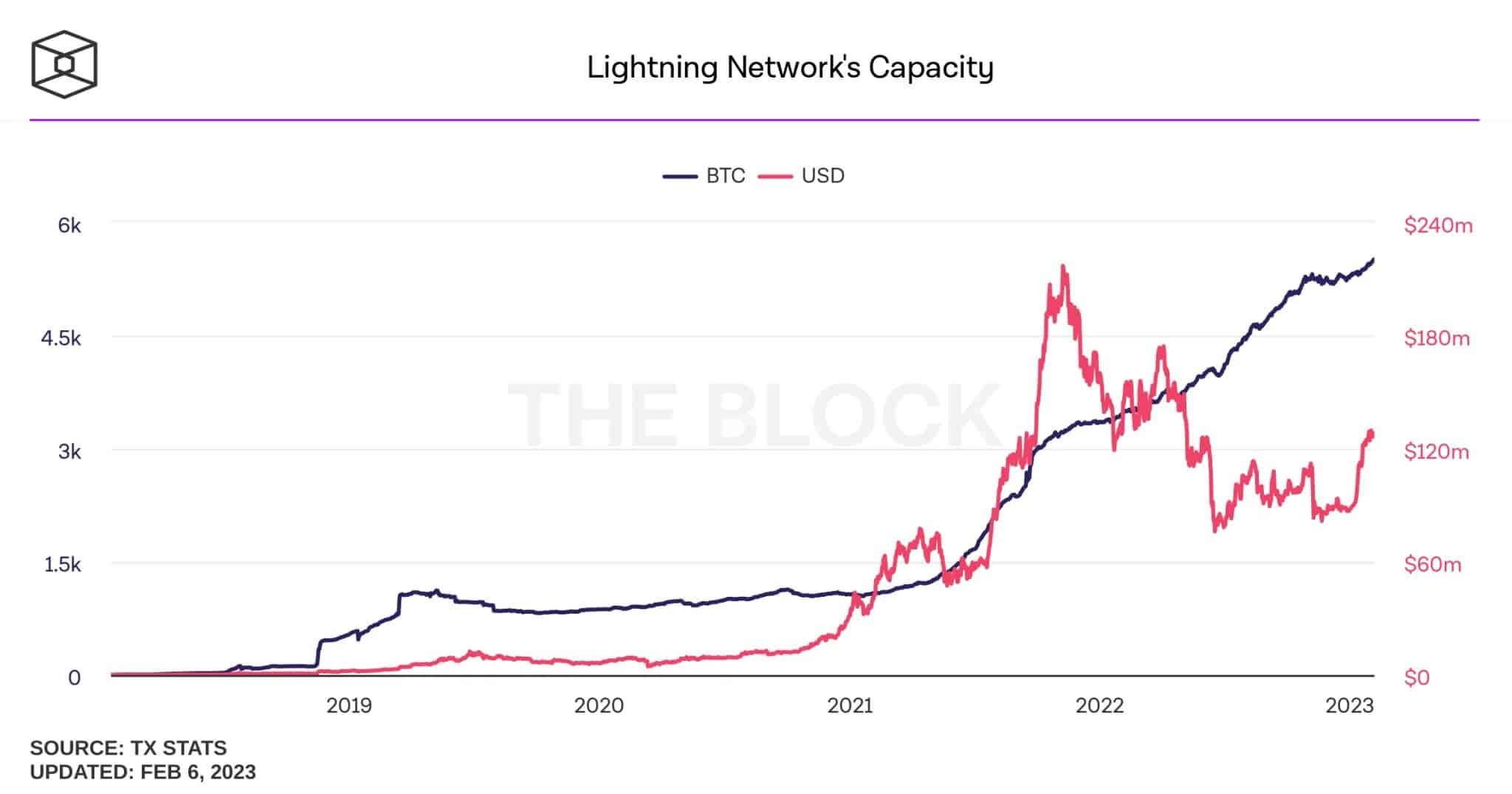The Lightning Network, the second-layer solution for the Bitcoin blockchain, continues to expand around the world. While the cryptocurrency market is still weak, the highly scalable network has just surpassed one of its records: nearly 5,400 bitcoins (BTC) are now deposited in this solution, proof of a continued craze for the queen of cryptocurrencies.
The Lightning Network’s new record
Over the past year, cryptocurrency prices have plummeted and fundraising in the web3 sector has drastically reduced. However, in terms of usage, we observe the opposite trend: the number of bitcoins (BTC) blocked on the Lightning Network has only increased since April 2021, and the end of the bull run has not stopped its growth.
As a reminder, the Lightning Network is a scalability solution built on top of the Bitcoin network. Its main strength is that it makes Bitcoin transactions instantaneous and infinitely low cost. Furthermore, this technology is the perfect tool to democratise micropayments in BTC.
Between February 2022 and February 2023, no less than 2,000 bitcoins were deposited in this scalability solution, representing a 57% increase in the total amount of assets stored on this network. Stagnating at around 5,200 BTC since the FTX affair, the Lightning Network has taken advantage of the recent rise in crypto-currencies to set a new record today at 5,490 BTC.

Figure 1 – Evolution of the number of bitcoins deposited on the Lightning Network and their value in dollars between January 2018 and February 2023
On the graph above, note that the valuation of bitcoins on the Lightning Network (red) has not kept up with the growth in units of deposited BTC (blue). This is due to the volatility of the Bitcoin price: the BTC price fell sharply in 2022, causing the value of the assets locked up on the network to fall despite its growth in capacity.
International adoption
Despite the Lightning Network being in beta since its launch in 2018, the network has accelerated its democratisation since the 2021 bull run. One of the triggers was the legalisation of Bitcoin as legal tender in El Salvador in September 2022. In this Central American country, the large-scale use of the queen of cryptocurrencies has taken place through open channels on the Lightning Network.
Similarly, some companies are appropriating this innovation to facilitate international money transfers. In areas where banking institutions are difficult to access, the Lightning Network opens up financial services to local populations. Since December 2022, companies such as Strike and CoinCorner have made it possible to transfer money from Western countries (the US and the EU) to African countries (such as Ghana, Nigeria and Kenya) using the Lightning Network.
Despite its advantages, the network also has its limitations: in an interview with Cryptoast, one of the co-creators of the Lightning Network, Thaddeus Dryja, said that the technology is not currently able to support the entire global population:
With the technology we have today, we still can’t have too many people using the Lightning Network. So we are limited in the number of people who can open channels. We can’t at this stage have a billion people using the Lightning Network.”
